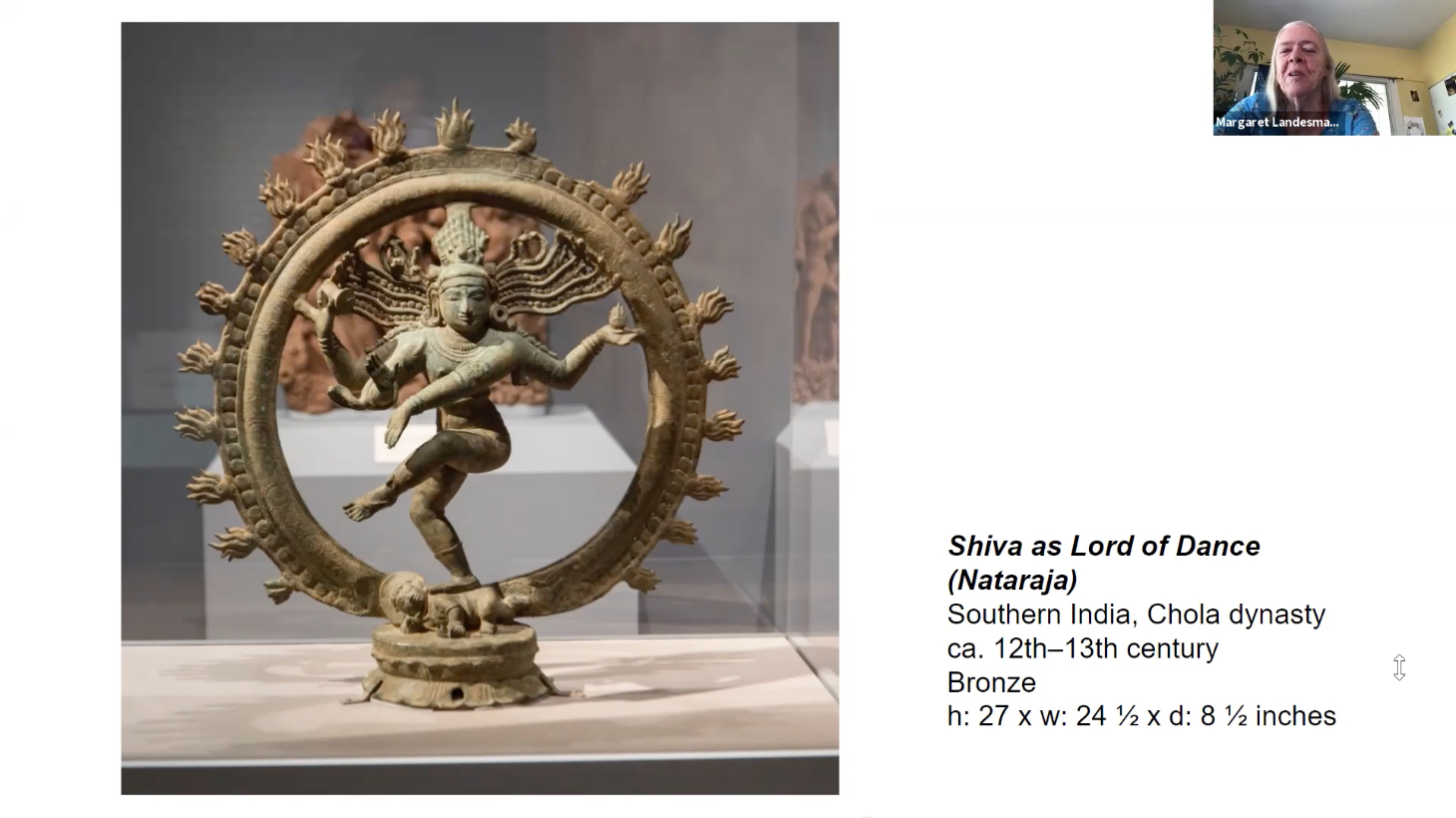
Margaret Landesman comments on an art piece during a virtual UMFA tour for Osher.
When Jody Andes moved back to Utah, she was tired of teaching and looking to volunteer her time instead. A friend invited her to go through training to become a docent volunteer for the Utah Museum of Fine Arts (UMFA). That was 12 years ago.
Margaret Landesman studied art history in graduate school and worked at the J. Willard Marriott Library as a librarian. When she retired, she too began volunteering as a docent for the UMFA. That was nine years ago.
It was Landesman who recruited Jill Meyer in 2016. Today, Meyer is both a docent volunteer and director of the U’s Osher Lifelong Learning Institute which serves lifelong learners ages 50 and up.
All three women share a love of art and human connection. Being a docent volunteer, they say, is the perfect combination of both. That’s why, in March 2020 when the museum had to close its doors to help stop the spread of COVID-19, they were determined to find a way to keep giving tours.
“It was a really busy time for us when everything shut down,” said Ashley Farmer, co-director of learning and engagement for UMFA. “We were having large groups of often 60 or more students coming in for tours four days per week and about 65 docent volunteers helping us. When all of that came to a halt, I got an email from Jill pretty much right away with an invitation to do virtual tours for Osher instead of canceling planned visits to the museum.”
In her role with Osher, Meyer hosted a class where UMFA curator and Osher instructor Luke Kelly had figured out how to give a virtual tour of his exhibition of Japanese woodblock prints for the class. She immediately thought of the Osher members who love going on tours and were suddenly left with no tours to take, and the UMFA docent volunteers who were left without tours to give.
Luckily, a public database of the UMFA collection and high-quality photos of the objects already existed. A group of about 15 docents quickly learned how to discuss the art on Zoom and they were back in business.
“We’ve found there are even some silver linings to giving the tours online such as being able to reach people who might be reluctant to come to campus and park, who aren’t physically up to it or who live too far way.” said Landesman. “You can also show people details in the art a little better and show things like underdrawings and conservation treatment.”
“I think it would have been a pity to waste the opportunity to be able to reach a lot of people who we would never have gotten in the museum,” said Andes. “A couple of my friends who live in Texas were able to come on a tour which is pretty cool.”
In addition to reaching new people, the importance of staying connected to each other has kept them motivated.
“Docents really connect people to each other and they connect people to art,” said Meyer. “There have been and are so many ups and downs with the pandemic, being able to share these experiences with other people has been really special. It’s been a process of discovery, connection and continuing to learn from each other.”
The UMFA will host in-person programs beginning in January. You can visit the calendar for events and learn more about tours here.
